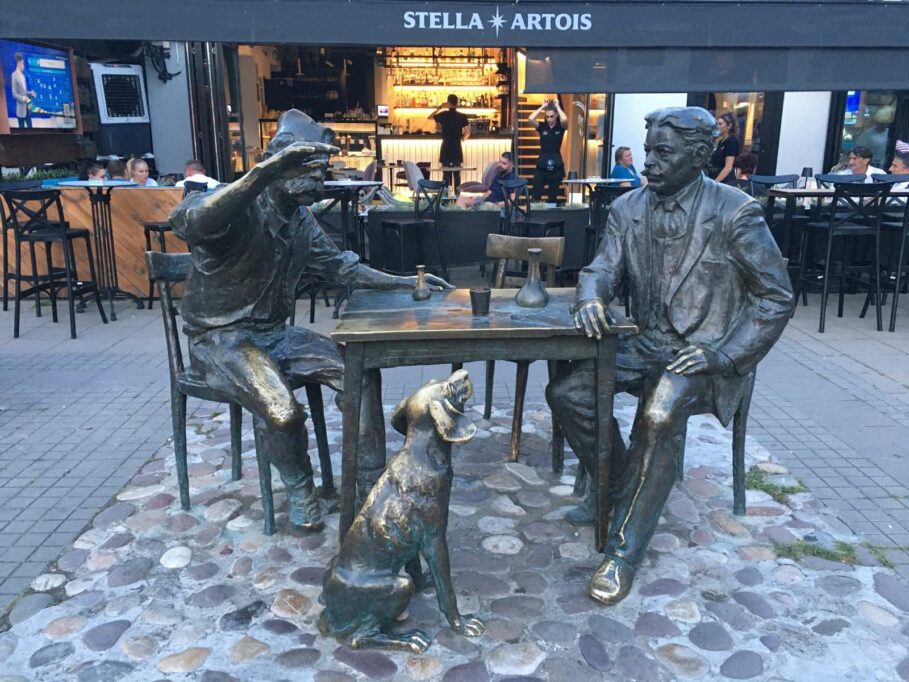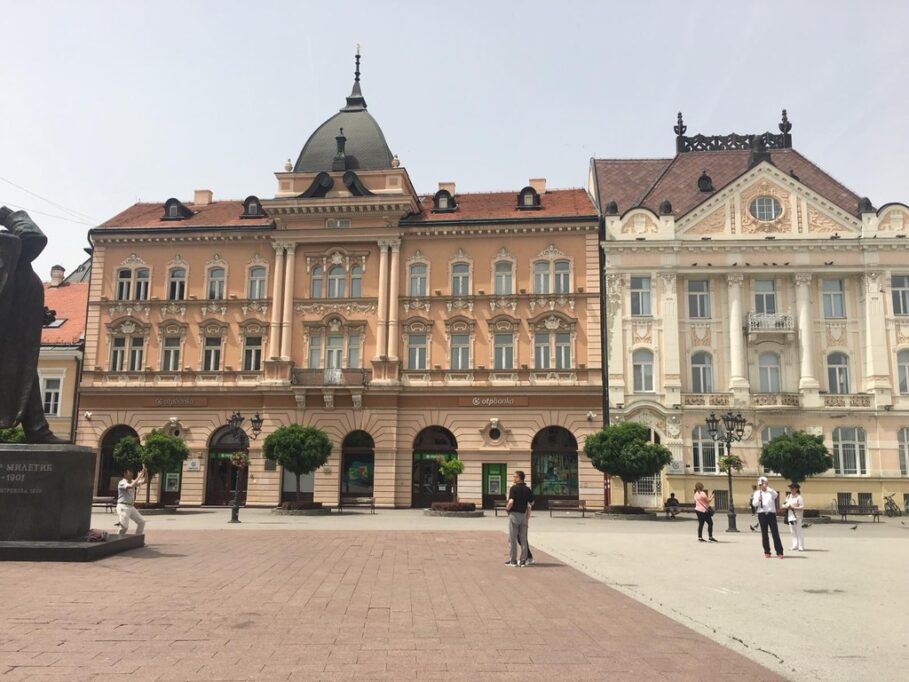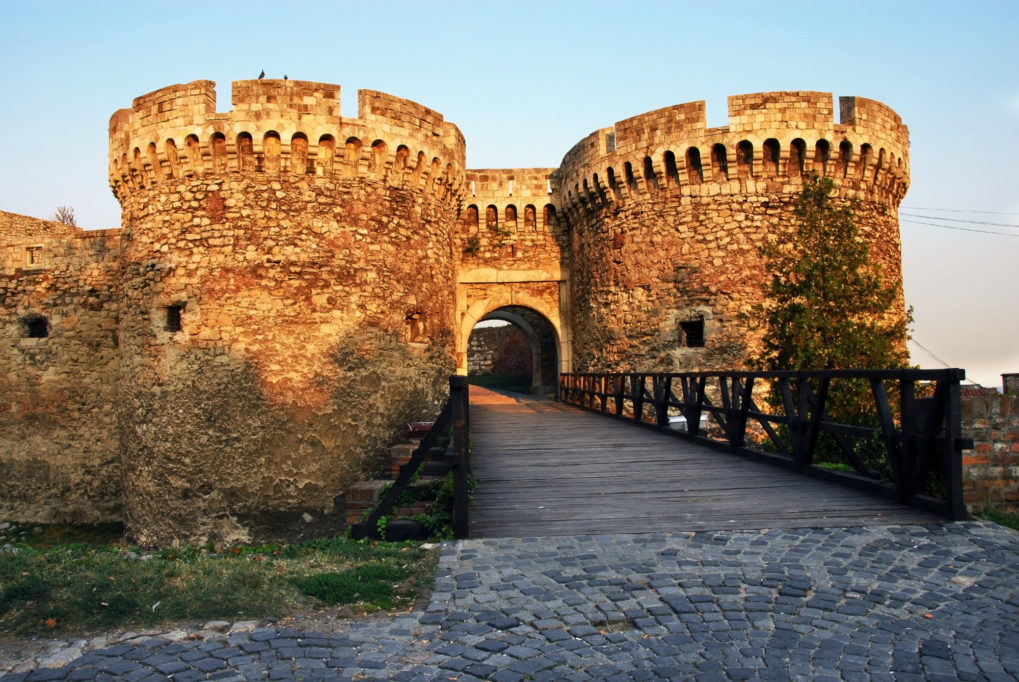SERBIA
TRAVEL GUIDE
Discover Serbia’s rich cultural heritage, stunning landscapes, and vibrant cities with our comprehensive travel guide. From the historic charm of Belgrade and the architectural wonders of Novi Sad to the natural beauty of the Tara National Park and the enchanting monasteries of Fruška Gora, Serbia offers a diverse array of experiences. Explore ancient fortresses, savor traditional cuisine, and immerse yourself in the local customs and festivals that make Serbia a captivating destination for travelers.
Need to Know
Why Travel to Serbia
Tip: Serbia offers vibrant culture, historic cities, and scenic mountains.
Why: From Belgrade’s lively nightlife to Zlatibor’s serene landscapes, Serbia blends Ottoman and Austro-Hungarian heritage with Balkan hospitality.
How: Explore fortresses and museums ($2–8), enjoy local cuisine ($2–7), and book tours via Viator ($10–30) for guided experiences.
Do I Need a Visa
Tip: EU, US, and many nationalities get 90-day visa-free entry. Others may need a visa ($30–60). Check requirements in advance.
Why: Ensures smooth entry and compliance with immigration rules.
How: Check via Serbian embassy websites ($0). Carry digital passport copies on Google Drive ($0). Have proof of accommodation ready.
What is the Currency of Serbia
Tip: The currency is Serbian Dinar (RSD). Budget travelers spend RSD 3000–6000/day ($25–50).
Why: Dinars are used for most transactions; cards are accepted in cities but cash is key in rural areas.
How: Exchange at banks ($0) or use ATMs (RSD 200–500 fee, $2–5). Carry small Dinar notes (RSD 100–500). Use Revolut ($0 fees) for better rates.
Is Serbia Cheap to Visit
Tip: Serbia is highly affordable, with meals (RSD 200–800, $2–7), hostels (RSD 1200–3500/night, $10–30), and transport (RSD 50–500, $0.50–5) at low costs.
Why: Budget-friendly options suit backpackers and cultural explorers.
How: Stay in hostels (RSD 1200–3500). Eat at kafanas (RSD 200–500). Book via Booking.com ($0) for deals.
Can I Drink the Tap Water
Tip: Tap water is safe in Belgrade and Novi Sad but use bottled water in rural areas (RSD 50–100, $0.50–1).
Why: Rural water quality varies, and bottled water avoids health risks.
How: Buy bottled water from shops (RSD 50–100). Use reusable bottles with filters ($10–20) in rural areas. Check seals on bottles.
Can I Buy a SIM Card
Tip: Purchase a local SIM card for data and calls (RSD 600–1800, $5–15).
Why: Affordable data plans ensure connectivity for navigation and communication.
How: Buy SIMs at airports or shops (RSD 600–1800). Top up via mobile apps ($0). Choose providers like Telekom Srbija or Yettel.
Enchanting Serbia Travel Guide: Your Gateway to Unforgettable Adventures
Welcome to the Enchanting Serbia Travel Guide, your essential companion for exploring a Balkan gem. Serbia captivates with its historic fortresses, vibrant cities, and stunning natural landscapes, from Belgrade’s Kalemegdan Fortress to Zlatibor’s rolling hills. This guide covers eight top destinations, cultural experiences, and practical tips to ensure a seamless and unforgettable journey. Whether you’re exploring Novi Sad’s cultural festivals or hiking in Kopaonik, let this guide inspire your Serbian adventure.
How to Get to Serbia
Travel Options
Tip: Fly into Belgrade (BEG) ($500–1200 from North America, $50–200 from Europe). Buses connect from Croatia or Bosnia ($10–20).
Why: Belgrade is the main gateway with excellent regional connections to the Balkans.
How: Compare flights on Skyscanner ($0). Take buses from Zagreb ($10–20) or Sarajevo ($15–25). Use buses (RSD 200–1000, $2–10) or trains within Serbia.
Best Time to Visit Serbia
Optimal Seasons
Tip: Visit in spring (April–June) or autumn (September–October) for mild weather (15–25°C). Summer (July–August) is warm (25–30°C). Winter (December–February) suits skiing (0–10°C).
Why: Spring and autumn offer pleasant weather and fewer crowds; winter is ideal for mountain activities.
How: Book accommodations early for summer (RSD 1800–7000/night, $15–60). Pack warm clothing for winter. Check forecasts via Weather Underground ($0).
Top Destinations in Serbia
Belgrade
Tip: Visit Kalemegdan Fortress ($0), stroll Skadarlija ($0), and explore the Nikola Tesla Museum (RSD 500, $4). Take a Sava River cruise (RSD 1000–2000, $8–16) or try cevapi (RSD 200–500, $2–4).
Why: Belgrade, Serbia’s vibrant capital, blends Ottoman and Austro-Hungarian heritage with lively nightlife. Kalemegdan Fortress offers stunning views over the Danube and Sava rivers, while Skadarlija’s bohemian streets buzz with kafanas and music.
How: Use Belgrade’s buses or trams (RSD 50–100, $0.50–1). Book museum tickets online ($0 fees) or tours via Viator (RSD 1200–3000, $10–25). Wear comfortable shoes for fortress walks and visit in summer for outdoor cafes.
Novi Sad
Tip: Explore Petrovaradin Fortress ($0), stroll Dunavska Street ($0), and visit the Museum of Vojvodina (RSD 200, $2). Attend the EXIT Festival (RSD 5000–10000, $40–80) or try pljeskavica (RSD 200–500, $2–4).
Why: Novi Sad, Serbia’s cultural hub, is known for the Petrovaradin Fortress and its iconic clock tower. The vibrant Dunavska Street and the world-famous EXIT Festival make it a lively destination with Austro-Hungarian charm and youthful energy.
How: Take buses from Belgrade (RSD 400–600, $3–5, 1 hour). Stay in guesthouses (RSD 1200–3500, $10–30/night). Book tours via GetYourGuide (RSD 1200–2500, $10–20), try burek at bakeries (RSD 100–200, $1–2), and visit in July for EXIT.
Nis
Tip: Visit Nis Fortress ($0), explore the Skull Tower (RSD 200, $2), and see the Mediana ruins (RSD 150, $1). Take a day trip to Devil’s Town (RSD 1000–2000, $8–16) or try rostilj (RSD 200–500, $2–4).
Why: Nis, one of Serbia’s oldest cities, blends Roman and Ottoman history with the unique Skull Tower and Nis Fortress. The nearby Devil’s Town, a UNESCO-nominated site, offers surreal rock formations, adding natural wonder to this historic hub.
How: Take buses from Belgrade (RSD 600–1000, $5–8, 3 hours). Stay in hotels (RSD 1800–5000, $15–40/night). Book tours via Klook (RSD 1200–2500, $10–20), wear sturdy shoes for ruins, and visit in summer for outdoor cafes.
Subotica
Tip: Visit the Art Nouveau City Hall (RSD 200, $2), explore Palic Lake ($0), and see the Synagogue ($0–100, $0–1). Try goulash (RSD 200–400, $2–3) or join a wine tour (RSD 1000–2000, $8–16).
Why: Subotica, near the Hungarian border, is renowned for its stunning Art Nouveau architecture, including the colorful City Hall. Palic Lake offers serene beauty, and the Synagogue reflects the city’s multicultural heritage, blending Serbian and Hungarian influences.
How: Take trains from Novi Sad (RSD 400–600, $3–5, 2 hours). Stay in guesthouses (RSD 1200–3500, $10–30/night). Book tours via Viator (RSD 1200–2500, $10–20), bring sunscreen for lake visits, and visit in summer for festivals.
Zlatibor
Tip: Hike in Zlatibor Nature Park ($0), visit the Stopica Cave (RSD 200, $2), and explore Sirogojno Open-Air Museum (RSD 200, $2). Try kajmak (RSD 100–300, $1–2) or ski in winter (RSD 1000–2000/day, $8–16).
Why: Zlatibor, a scenic mountain region, offers rolling hills, pine forests, and traditional Serbian village life. The Stopica Cave and Sirogojno Museum showcase natural beauty and cultural heritage, making it a haven for outdoor and cultural enthusiasts.
How: Take buses from Belgrade (RSD 600–1000, $5–8, 4 hours). Stay in chalets (RSD 1200–3500, $10–30/night). Book tours via GetYourGuide (RSD 1200–2500, $10–20), bring hiking boots, and visit in winter for skiing or summer for hikes.
Sremski Karlovci
Tip: Visit the Patriarchate Court ($0–100, $0–1), explore the Four Lions Fountain ($0), and join a wine tasting (RSD 500–1000, $4–8). Try kuglof cake (RSD 100–200, $1–2) or stroll the historic center ($0).
Why: Sremski Karlovci, a charming town, is a cultural gem with Baroque architecture and a rich winemaking tradition. The Patriarchate Court and historic churches reflect its Serbian Orthodox heritage, while local wineries offer a taste of Srem’s famous Bermet.
How: Take buses from Novi Sad (RSD 100–200, $1–2, 30 minutes). Stay in guesthouses (RSD 1200–3000, $10–25/night). Book wine tours via Klook (RSD 1000–2000, $8–16), wear comfortable shoes for cobblestones, and visit in autumn for harvest festivals.
Kragujevac
Tip: Visit the Sumadija Museum (RSD 200, $2), explore the Memorial Park (RSD 0–100, $0–1), and stroll the Great Park ($0). Try pasulj (RSD 200–400, $2–3) or join a city tour (RSD 1000–2000, $8–16).
Why: Kragujevac, the heart of Sumadija, offers a blend of industrial history and green spaces. The Memorial Park honors WWII history, while the Sumadija Museum showcases Serbia’s 19th-century heritage, complemented by the city’s vibrant parks and local cuisine.
How: Take buses from Belgrade (RSD 400–600, $3–5, 2 hours). Stay in hotels (RSD 1800–4000, $15–35/night). Book tours via Viator (RSD 1200–2500, $10–20), try local rakija (RSD 100–200, $1–2), and visit in summer for outdoor events.
Kopaonik
Tip: Ski in Kopaonik National Park (RSD 1500–2500/day, $12–20), hike in summer ($0), and visit the Sunčana Dolina ($0). Try lamb stew (RSD 200–500, $2–4) or join a guided tour (RSD 1000–2000, $8–16).
Why: Kopaonik, Serbia’s premier ski destination, offers stunning mountain trails and slopes in a national park setting. Its vibrant resort atmosphere and natural beauty make it a year-round destination for adventure seekers and nature lovers.
How: Take buses from Nis (RSD 600–1000, $5–8, 3 hours). Stay in chalets (RSD 1800–4000, $15–35/night). Book tours via GetYourGuide (RSD 1200–2500, $10–20), bring warm layers for winter, and visit in winter for skiing or summer for hiking.
Cultural Experiences and Tips
Serbian Cuisine
Tip: Try cevapi (RSD 200–500, $2–4), pljeskavica (RSD 200–500, $2–4), or sarma (RSD 200–400, $2–3) at local kafanas. Sip rakija (RSD 100–200, $1–2).
Why: Serbia’s hearty cuisine reflects Balkan flavors with fresh, local ingredients and Ottoman influences.
How: Dine at Belgrade’s Skadarlija or Novi Sad’s kafanas. Book cooking classes via Viator (RSD 1200–3000, $10–25). Pair with local wine (RSD 200–500, $2–4).
Cultural Festivals and Crafts
Tip: Attend the EXIT Festival in Novi Sad (July, RSD 5000–10000, $40–80) or visit pottery workshops in Zlatibor (RSD 500–1000, $4–8).
Why: Festivals and crafts showcase Serbia’s Slavic and Balkan heritage.
How: Check schedules on SerbiaTravel.rs ($0). Book cultural tours via GetYourGuide (RSD 1200–2500, $10–20). Bargain respectfully at markets.
Music and Dance
Tip: Enjoy kolo dance at festivals (RSD 0–500, $0–4) or live music in Belgrade’s kafanas (RSD 200–1000, $2–8).
Why: Serbia’s music and dance reflect its vibrant Balkan traditions.
How: Book tickets via Eventim.rs ($0). Visit venues like Belgrade’s Three Carrots. Dress casually for kafana evenings.
Practical Tips for Traveling in Serbia
Visa and Documentation
Tip: Ensure your passport is valid for 6 months. Many nationalities get 90-day visa-free entry; others need a visa (RSD 3500–7000, $30–60).
Why: Simplifies entry and ensures compliance with immigration rules.
How: Check via Serbian embassy websites ($0). Carry digital copies on Google Drive ($0). Have proof of accommodation ready.
Currency and Payments
Tip: Use Serbian Dinar (RSD 3000–6000/day, $25–50). Cards are accepted in cities; cash is needed for rural areas and markets.
Why: Small vendors and rural areas often require cash payments.
How: Use ATMs in Belgrade (RSD 200–500 fee, $2–5). Carry small Dinar notes (RSD 100–500). Use Revolut ($0 fees) for better rates.
Language and Communication
Tip: Learn phrases like “zdravo” (hello) or “hvala” (thank you). English is common in tourist areas but limited elsewhere.
Why: Basic Serbian enhances interactions and shows respect.
How: Use Google Translate ($0) for offline use. Purchase a local SIM card (RSD 600–1800, $5–15) for data.
Safety and Dangers in Serbia
Tip: Serbia is safe, but beware of petty theft in Belgrade’s markets or Novi Sad’s festivals. Be cautious hiking in remote mountains.
Why: Low crime rates, but tourist areas and trails require vigilance.
How: Use a money belt ($10–20). Check travel advisories (US State Department, $0). Drink bottled water in rural areas (RSD 50–100, $0.50–1).
More Safety Tips for EuropeAccommodation Options
Tip: Choose hotels in Belgrade (RSD 1800–7000, $15–60/night), hostels in Novi Sad (RSD 1200–3500, $10–30/night), or guesthouses in Zlatibor (RSD 1200–3500, $10–30/night).
Why: Diverse options suit budgets, from urban hotels to mountain chalets.
How: Book via Booking.com or Airbnb ($0). Opt for central or scenic locations. Check reviews for authenticity.
Transportation
Tip: Use buses (RSD 200–1000, $2–10), trains (RSD 200–1000, $2–10), or rent cars (RSD 2400–6000/day, $20–50). Walking is viable in city centers.
Why: Affordable transport options suit both cities and rural exploration.
How: Book buses via Lasta.rs ($0). Use trains via Srbija Voz ($0) or rent cars via Rentalcars.com ($0). Carry small cash for fares.
Why This Serbia Travel Guide is Essential
Your Gateway to Unforgettable Adventures
Tip: Use this guide to explore Serbia’s cultural treasures, stay safe, and immerse in local traditions.
Why: Serbia’s blend of history, cities, and landscapes requires informed planning.
How: Follow tips for Belgrade, Novi Sad, and more. Enjoy cevapi (RSD 200–500, $2–4) and kolo dance performances (RSD 0–500, $0–4). Use apps like Lasta.rs ($0) for seamless travel.



